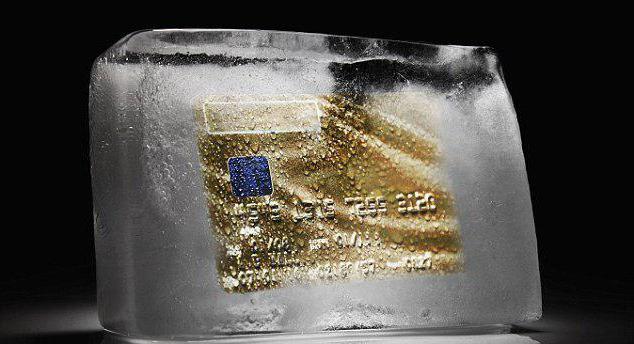To analyze statistics on the circulation of rubles in Russia, the Central Bank requires banks to indicate in PKO and RKO the sources of income and the direction of the issue of funds. The requirements for detailed information are described in the provision of BR No. 318 "On the procedure for conducting cash transactions". It is worth noting that they do not apply to operations with foreign currency.
Organization
In order not to indicate long names in the documents, the Bank of Russia encrypted items of income and expense with the help of codes. These elements have their own name - "cash symbols." All documents confirming the movement of funds contain a field in which this code and amount are indicated. Bank cash symbols are used to distribute all transactions and to generate reports for the Central Bank. If different parts of the total amount of the document correspond to different symbols, then this is also displayed in separate reporting fields.

Explanation of cash symbols for implementation
Code "02" reflects the amount of cash received from the sale of goods to individuals and legal entities. To reflect payment for services, the code "11" is used. But not for all enterprises, but only for those for which the provision of paid services is not the main activity. These are enterprises of railway, water, automobile, passenger transport, museums, exhibitions, cultural parks, etc. This also includes the receipts of rubles for transferring to the accounts of legal entities and entrepreneurs with comments “For training (treatment, tour package, rent, etc.). d.) ".
The cash symbol in the checkbook under the number "12" is used to reflect the amounts of taxes, fines, insurance premiums, customs payments received from individuals without opening an account. It also displays all types of membership fees transferred to the accounts of partnerships and cooperatives, various charitable, targeted, share, entrance fees.
Transactions
We list the main ones:
- “13” - transfers between individuals;
- “14” - transfer of money to the account of a loan without opening a current account in a bank;
- “15” - payment of transactions with real estate, contributions to utility bills, homeowners associations;
- “16” - receipt of funds from individuals to a deposit or savings account opened with a bank, including in foreign currency;
- “17” - receipt of money from the Federal Communications Agency;
- “19” - receipt of funds in the accounts of private entrepreneurs.
The following cash register symbols are used to reflect securities transactions. Receipts from operations with government bonds reflected by the code "20", payment of bills - "21". The code “22” reflects the movement of funds in the accounts of the organizers of gambling: sweepstakes, bookmakers, casinos, slot machines, and the sale of lottery tickets. Receipts for payment of traveller's checks contain the symbol "30". Transactions with the code “31” reflect the movement of funds to current accounts opened with the bank, as well as transfers in foreign currency (except for repayment of loans).

Other supply
With the code "32" in the payments is reflected:
- return reporting amounts received by cash checks as payment for banking operations, such as commission and rental of individual safes, etc .;
- the receipt of money from military units of the Ministry of Defense, if the source of receipt is not indicated in the announcement of contribution;
- transfer of funds from the sale of own equipment;
- fines, penalties and fees on loans issued;
- safe deposit box rental;
- proceeds from the sale of precious metals to individuals.
Cash Operations
Code "33" is used to reflect the capitalization of cash withdrawn from terminals, ATMs and other devices used to receive money in automatic mode. The line "35" displays the balance of money at the bank cash desk at the beginning of the month.
The following symbols of the cash plan in the bank are used when moving funds between branches, structural divisions or other credit institutions. These are codes "37" and "39".
All of the cash register symbols discussed below are used to reflect transactions involving the use of funds.

Social payments
Codes "40", "41" are used to reflect the transfer of funds for payment of labor, the payment of scholarships to students of universities and colleges, persons who are in vocational training, for retraining of employees for production needs and grants. For all other payments of a social nature that do not belong to the above categories, the code "42" is used. Payment of pensions, disability benefits is reflected in receipts with the symbol “50”.
other expenses
There are few of them, but it is also impossible to bypass such transactions:
- “46” - the issuance of funds for the purchase of agricultural products from the IP;
- “47” - money spent on gaming business operations and lottery ticket winnings;
- “51” - cash withdrawal from current accounts of individuals.
For the symbol of the cash plan "53", which is called "Other payments", such operations for the issuance of funds are provided:
- legal entities for payment to founders who are not employees of the organization;
- to pay child support;
- for charity purposes;
- to donors;
- for the purchase of precious metals;
- farm acquisition of pedigree cattle;
- for the purchase of recyclables, containers and building materials.

Financial operations
The provision of BR No. 318 lists cash symbols intended for the issuance of funds:
- on loans and loan agreements (“54”);
- savings deposits of individuals (“55”);
- listed through various payment systems: "Unistream", "Western Union", "Anelik", "Contact", etc. ("56");
- at the time of purchase from individuals of foreign currency ("57");
- from the accounts of individual entrepreneurs (“58”);
- units of the Federal Communications Agency (“59”).
Separately, cash symbols are provided to reflect the expenditure of funds on the Central Bank, including state ("60"), bills ("61"). In the same way as with incoming transactions, there is a code for reflecting the balance in cash at the end of the period (“70”), the movement of funds between structural divisions and branches of one bank (“71”) and different credit institutions (“75”) .
Off-balance sheet cash symbols in the bank
The receipt of funds through payment terminals with or without a card for payment of goods, services, taxes, insurance payments, in repayment of loans by individuals is reflected in receipts with the code "80". To issue cash through ATMs (“81”), to receive money using cards (“82”), to receive (“83”) and to spend (“84”) funds for operations using payment cards, there are also codes. Separately reflected the movement on the accounts of pawnshops (“85” and “86”), the sale (“87”) and purchase (“88”) scrap and non-ferrous metal waste IP.

Separately, it is worth noting the code "89" under the name "Rolling trade revenue." The cash amounts recorded by the bank on the balance on the first business day of the new month are displayed here. Advance salary payments, receipts and disbursements to non-profit organizations are also shown separately with the codes “96”, “97” and “98”.
Cash symbols "99" and "100" record a sample of operations on receipt of funds from banking agents, regardless of source.
Balance
The total amount for the characters from "02" to "39" should correspond to the total amount of expenses displayed by the characters "40" - "77". Off-balance codes are used to decrypt information on all revenues and expenses. The total amounts are reconciled with the balance on the account "202".
Nuances
In the classifier there are income and expense codes that are similar at first glance.Let's consider some of them.
The report that is submitted to the Bank of Russia does not include operations on receipt (issue) of money from the cash desk in the postoperative time or on weekends to the bank and from collectors.
According to the code “14”, the sums of receipts from individuals against the repayment of a mortgage loan that was provided from the funds of the target budget fund are reflected. But if the money was debited from the card through the cashier, then the symbol "82" is also used in the receipt.
Code "31" is used to record the receipt of money by individuals, except for such transfers:
- Repayment of a portion of a previously received loan. In such cases, the symbol “14” is used.
- Transfer of funds as payment of fines and arrears under a loan agreement. The symbol "32" is provided for these operations.
- Payment by an individual of a letter of credit for the acquisition of real estate (“15).
- Transferring funds from a current account to a deposit account, provided that this does not contradict the bank’s internal rules (“16”).

But the symbol "31" will be used to reflect the amounts of transactions between individuals without opening an account, including in foreign currency. This also includes material assistance on an irrevocable basis.
A lot of questions also arise regarding what operations to show with the code “32”. In theory, this should be all transactions that are not taken into account in sections "02", "11" - "17" and "19 -" 32 ". But bank employees often have questions about how to reflect transactions with the rental of safes, the receipt of funds through a card and the proceeds of the organization. Let's consider them in more detail.
When an individual makes payment to the safe arena account, the amount of VAT is indicated on the code “12”, and the cost of the service on the code “32”. To transfer funds received from the sale of fixed assets, the article “Other expenses” is used. When the money is deposited through the cashier at the card details, the amount is additionally duplicated under off-balance sheet item “82”.
Also dwell in more detail on the symbol "42". In addition to transactions not related to payroll this code reflects the issuance of:
- funds for hospitality,
- disability benefits, in part, which is paid at the expense of the employer;
- Compensation for employee use of personal property;
- dividends.

Loans that are issued to individuals in the form of transfers through payment systems are reflected in the same way as regular loans. At the same time, the comment should indicate “Issuing a loan for transfer”. All other transactions that individuals receive from organizations through payment systems are reflected in receipts with the symbol "56".
For "other deductions" the code "53" is allocated. Non-commercial organizations need to additionally indicate the off-balance symbol “98”.








